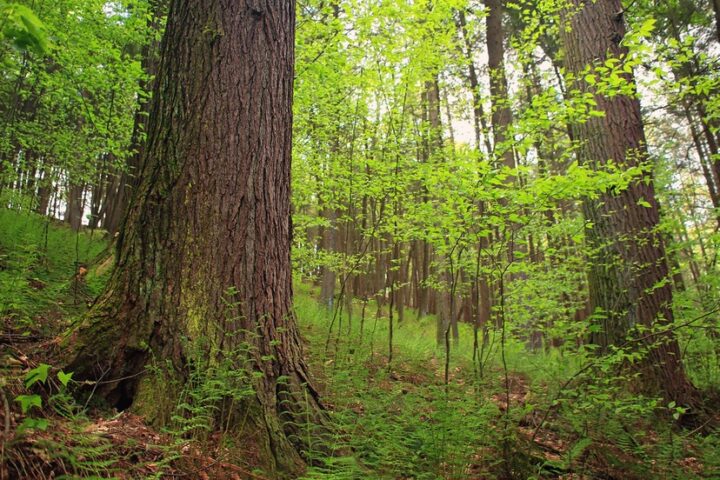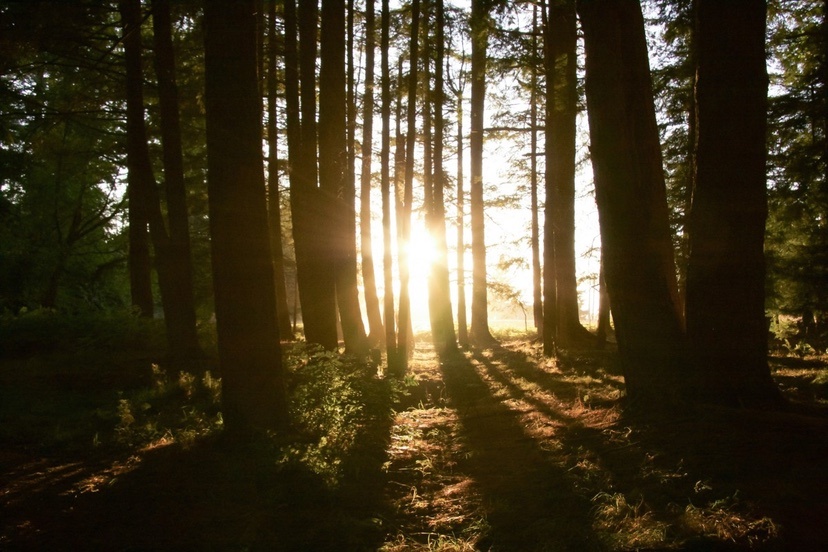By Alex Handloff
We all have a vision of what old growth means when it comes to the forest – big tall trees, right? – though our visions can be so well-defined that they obscure the nuance of what old growth really means and how our actions affect those ideas.
We are fascinated by tall, large diameter trees. One fact that defies our initial feeling about these trees is that size is not always related to age. Depending on growing conditions like soil, aspect, density of trees, geology, and more, a tree can grow at different speeds. Big trees are not always old, and old trees are not always big.
To complicate matters, the idea of an old growth forest is always in flux, just like the forest itself. A walk through a stand of giant ponderosa pine is a lovely endeavor, yet only a snapshot in time. Old trees die. New trees take their place. Both are true and must be true given the disturbances that are inevitable and necessary in a forested ecosystem, like fire, insects and disease, blowdowns, and more.
Therefore, the protection and promotion of old growth and large trees is not simply a question of which trees we want to hold on to now, but which actions we want to take for a future filled with trees we admire. We must look at the long-term vision of creating conditions that support the kind of trees and forests we all find inspiring (old and big), even if the fruits of those labors don’t appear for a generation or longer.

So, what actions can we take today that lead to that ideal future? That’s a difficult question given the unprecedented conditions that many forests face in our region. But it is a conversation of the utmost importance, one that happens regularly at the San Juan Headwaters Forest Health Partnership (SJFHP) monthly meetings, among many other topics. It’s also a conversation on the national stage, including this National Old-Growth Amendment for the US Forest Service.
Our voices and discussions locally help decide how we will manage our forests here in the Pagosa Springs area. It’s a conversation that needs many voices and opinions. For example, just this summer, participants discussed the notion of old growth and large trees on the Jackson Mountain landscape.
An important takeaway was that managing large and old growth trees is not a binary ‘yes or no’ question, where there is an intervention or none at all. Our actions can, in fact, enhance old growth characteristics, meaning that it isn’t necessarily beneficial to merely leave a stand of old and large trees alone.
There’s certainly no easy answer, and certainly no quick answer. Whatever direction we choose – and we get to have those exact conversations on what we choose here locally at SJHFHP meetings – if we want to have old growth and large trees, we need to commit to conversations that acknowledge the nuance and large timescales. We need to equally commit to actions that promote those ideal conditions, all the while understanding the truly more-than-human timeline upon which we work.
Are you interested in joining the conversation about old growth and large trees in the Pagosa Springs area? Join the SJHFHP monthly meetings.
Reach out to alex@mountainstudies.org for more information.
Alex Handloff is Collaborative Communications Manager with Mountain Studies Institute.

